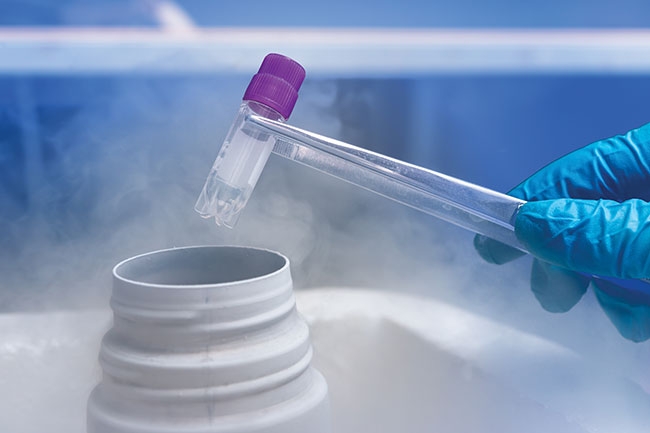
Valuable tool underutilized, says study
April 29, 2019
By Liza Mayer
Cryopreservation is a valuable tool in preserving living cells or tissues of aquaculture species but lack of standardization makes it an underutilized technique, says a study.
 Cryopreservation is a valuable tool in aquaculture but lack of standardization prevents it from being applied on a commercial scale Cryopreservation is a valuable tool in preserving living cells
Cryopreservation is a valuable tool in aquaculture but lack of standardization prevents it from being applied on a commercial scale Cryopreservation is a valuable tool in preserving living cellsAmong its uses in aquaculture is preserving milt (fish semen) for use at a later time for fertilization.
The lack of standardized procedure, standardized terminology and standardized reporting guidelines prevent the technique from being applied on a commercial scale, the study said. Non-standardized terminology and reporting systems could also cause mis-interpretation and irreproducibility of experiments among labs, it added.
To address the lack of standardization, the study recommended the implementation of standard operating procedures, support of stock centers and internet content for development of training programs, and strengthening of the role of scientific journals and reviewers in reducing the frequency of irreproducible outcomes.
Leticia Torres and Terrence R. Tiersch of the Louisiana State University Agricultural Center authored the study, titled “Addressing Reproducibility in Cryopreservation, and Considerations Necessary for Commercialization and Community Development in Support of Genetic Resources of Aquatic Species.”
At Canada Cryogenetics Services, cryopreservation is widely used in finfish aquaculture and cryoconservation, says manager Maureen Ritter. “It can be used for genetic backup and production backup for fish production. It is done on commercial-scale using Square Packs, which hold enough sperm cells to fertilize 5,000 salmon eggs.”
The Norway-based company has branches in the US, Canada and Chile. “We are the only company that does it on a commercial scale and we standardized the process through our procedures and protocols,” she says.
Advertisement
- Group’s strategic rebrand hones focus on coalition building
- Center for Aquaculture Technologies sold to Cuna Del Mar





